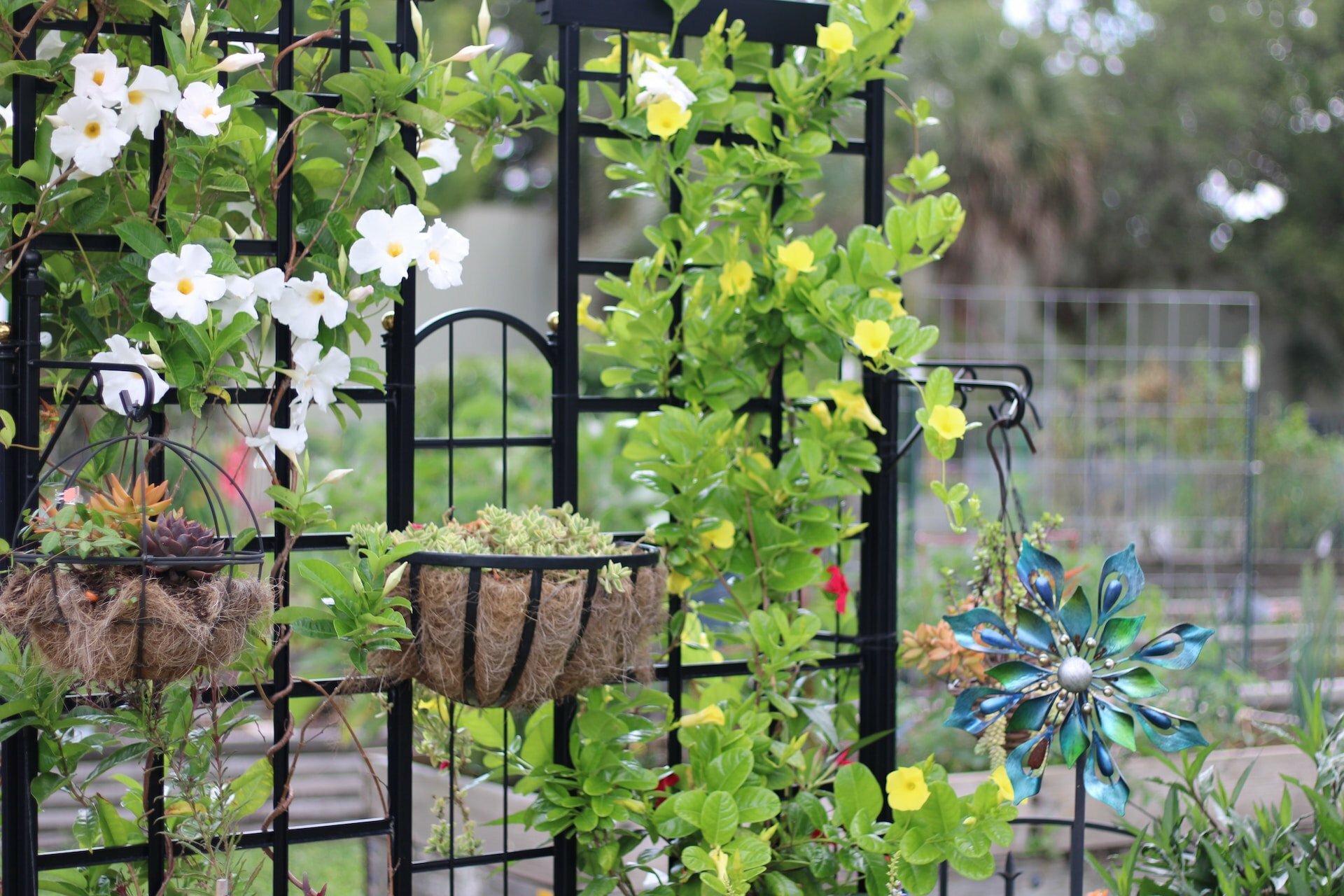Are you looking to transform your garden into a picturesque oasis? One way to add charm and character to your outdoor space is by incorporating a garden trellis. English garden trellises are not only functional but also aesthetically pleasing, making them a popular choice for gardening enthusiasts. In this comprehensive guide, we will explore the world of English garden trellises, their benefits, different types, installation tips, and creative ideas to make your garden stand out. So, let’s dive in and discover the wonders of English garden trellises!
The Beauty of English Garden Trellis
English garden trellises are elegant structures that serve multiple purposes in a garden. These decorative frameworks are typically made of wood or metal and are designed to support climbing plants and vines. With their intricate patterns and ornate designs, English garden trellises add a touch of sophistication and timeless beauty to any outdoor setting.
Benefits of Using a Garden Trellis

Garden trellises offer a range of benefits that can enhance your gardening experience. Here are some key advantages:
a. Vertical Gardening:
By utilizing a trellis, you can maximize your garden space by growing plants vertically. This is especially useful in small or limited areas where horizontal space is scarce.
b. Privacy and Screening:
Trellises can act as natural screens, providing privacy and shielding your garden from prying eyes. Placing trellises strategically can create secluded areas or block unsightly views.
c. Aesthetic Appeal:
English garden trellises are visually appealing and can serve as stunning focal points in your garden. They add height, depth, and structure to your outdoor space, creating a captivating visual display.
d. Plant Support:
Trellises provide sturdy support for climbing plants, allowing them to grow upward and flourish. This prevents plants from sprawling on the ground, reduces the risk of diseases, and facilitates better air circulation.
e. Versatility:
With a garden trellis, you have endless opportunities to unleash your creativity. You can use it as a backdrop for flower beds, create living walls, or even divide different sections of your garden.
Different Types of English Garden Trellises
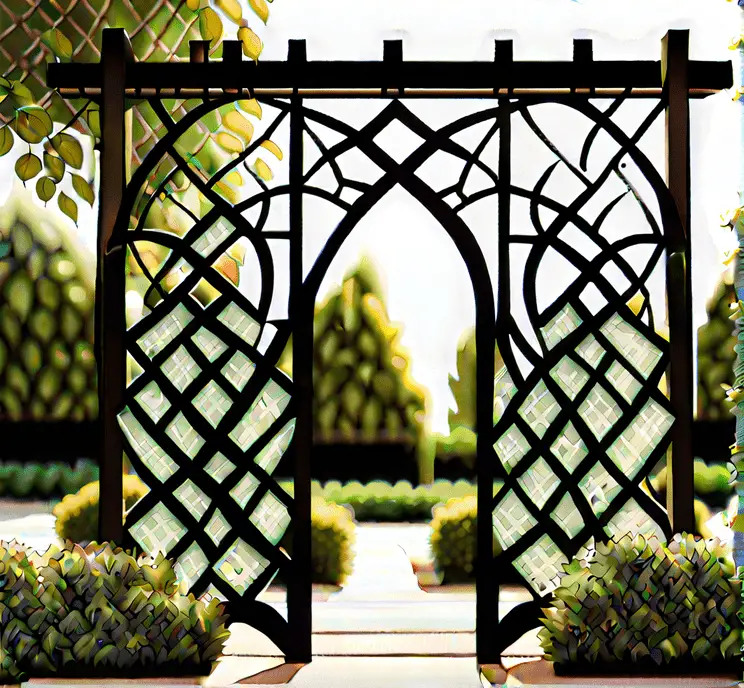
English garden trellises come in various styles, each offering its own unique charm. Let’s explore some popular types:
a. Lattice Trellis:
Lattice trellises feature a crisscross pattern of intersecting strips of wood or metal. This design allows climbing plants to weave through the gaps, creating a beautiful tapestry of foliage. Lattice trellises are versatile and can be freestanding or attached to walls and fences.
b. Obelisk Trellis:
Obelisk trellises are tall, pyramid-shaped structures that add vertical interest to your garden. These trellises are ideal for growing climbing roses, clematis, or other vining plants. Obelisks can be standalone or placed in containers, making them suitable for both large and small gardens.
c. Fan Trellis:
Fan trellises resemble open fans and are perfect for training climbing plants with delicate tendrils. They are often used against walls or as a decorative element in garden borders. Fan trellises add a touch of elegance and create a focal point in any garden.
d. Arch Trellis:
Arch trellises are curved structures that provide an enchanting entryway or passage in your garden. Covered with climbing plants, they create a magical tunnel-like effect and add a sense of romance and whimsy to the landscape.
e. Wall Trellis:
As the name suggests, wall trellises are designed to be attached to walls or fences. They are space-efficient and great for vertical gardening. Wall trellises are available in various styles and sizes, allowing you to customize them to suit your garden’s aesthetics.
Choosing the Right Trellis for Your Garden
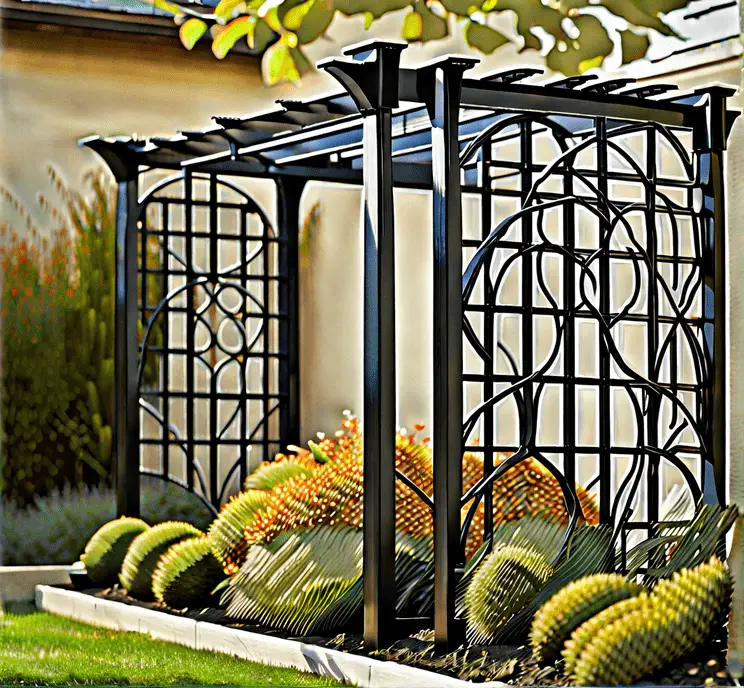
When selecting an English garden trellis, consider the following factors:
a. Garden Size and Space:
Assess the available space in your garden and choose a trellis that fits well without overpowering the surroundings. For smaller gardens, compact trellises like obelisks or wall trellises can be a better choice.
b. Climbing Plants:
Consider the types of plants you want to grow on the trellis. Some plants require sturdier structures, while others can thrive on delicate trellises. Ensure the trellis design and material can adequately support the weight and growth habits of your chosen plants.
c. Style and Theme:
Think about your garden’s overall style and theme. Select a trellis that complements the existing aesthetic and blends harmoniously with the surrounding elements. Matching the trellis design to the architectural style of your home can create a cohesive and visually pleasing look.
d. Durability and Maintenance:
Opt for trellises made from high-quality materials that are weather-resistant and long-lasting. Consider the maintenance requirements of the trellis, such as painting or staining, and choose materials that align with your desired level of upkeep.
Installing an English Garden Trellis
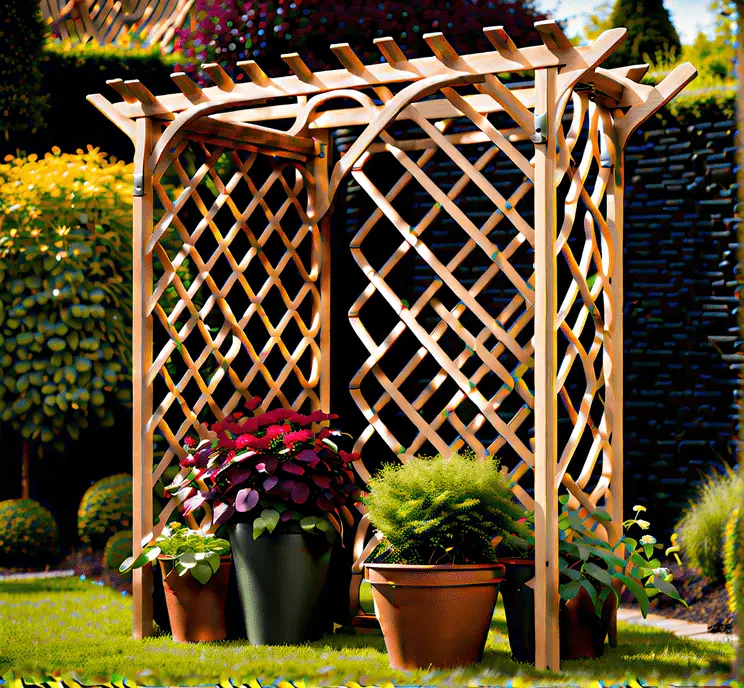
Proper installation ensures the stability and longevity of your garden trellis. Follow these steps for a successful installation:
a. Site Preparation:
Choose the location for your trellis and clear the area of any obstructions. Ensure the ground is level and stable.
b. Digging Holes:
For freestanding trellises, dig holes that are deep enough to provide sufficient support. The depth will depend on the trellis’s size and the type of soil. As a general rule, the holes should be at least one-third of the trellis’s height.
c. Securing the Trellis:
Place the trellis in the holes and ensure it stands upright. Backfill the holes with soil, tamping it down firmly to provide stability. Use concrete or gravel to secure the trellis further, if necessary.
d. Attaching to Walls or Fences:
If attaching the trellis to a wall or fence, use appropriate fasteners and ensure they are securely anchored. Follow the manufacturer’s instructions for proper attachment.
e. Planting and Training:
Once the trellis is installed, plant your chosen climbing plants at the base of the trellis. As they grow, gently guide and secure their tendrils or stems to the trellis using soft ties or plant clips. Regularly check and adjust the ties as needed to prevent damage to the plants.
Creative Ideas for Using a Trellis in Your Garden
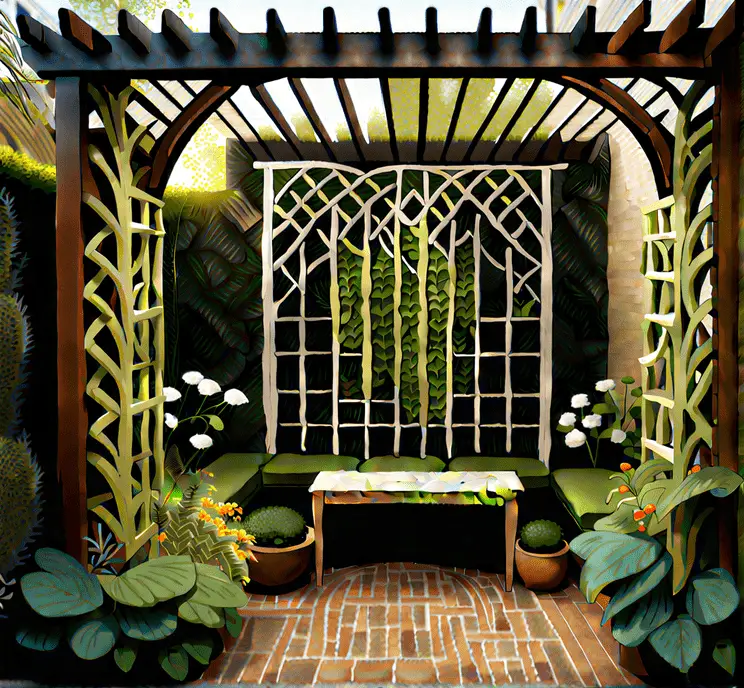
English garden trellises offer endless possibilities for creative expression. Here are some inspiring ideas to make the most of your trellis:
a. Vertical Garden:
Transform your trellis into a living work of art by planting a variety of climbing plants with different textures, colors, and bloom times. This creates a vibrant and dynamic vertical garden that adds depth and visual interest to your space.
b. Outdoor Room Divider:
Use trellises strategically to divide your outdoor space into distinct areas. This is particularly useful in larger gardens or open yards, creating intimate nooks for relaxation, dining, or entertaining.
c. Garden Archway:
Install two arch trellises facing each other to create an enchanting garden archway. Allow climbing plants to grow over and intertwine the arches, forming a captivating entrance to your garden.
d. Privacy Screen:
Position a series of tall trellises along the boundary of your garden to create a natural privacy screen. Encourage fast-growing vines to cover the trellises, forming a lush green wall that shields your garden from prying eyes.
e. Potted Plant Showcase:
Place a wall trellis against a blank wall or fence and adorn it with a collection of potted plants. This transforms the trellis into a living showcase, displaying a colorful array of flowers, herbs, or even succulents.
Maintaining Your English Garden Trellis
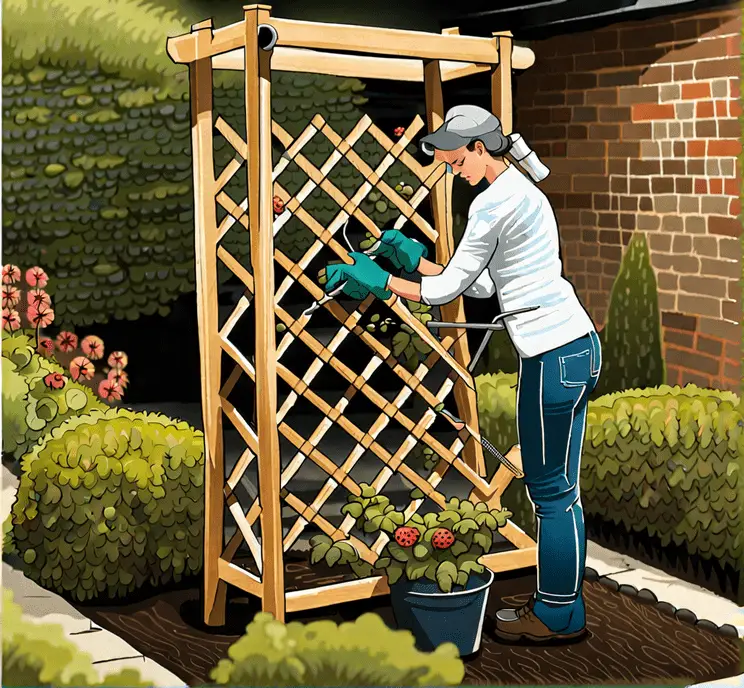
To ensure the longevity and beauty of your trellis, regular maintenance is essential. Follow these tips to keep your trellis in top condition:
a. Cleaning:
Periodically clean your trellis to remove dirt, debris, and plant residue. Use a mild detergent and a soft brush or sponge to gently scrub the surface. Rinse thoroughly with water and allow it to dry completely before applying any treatments or finishes.
b. Painting or Staining:
If your trellis is made of wood, painting or staining can protect it from weathering and enhance its appearance. Choose a paint or stain suitable for outdoor use and follow the manufacturer’s instructions for application.
c. Inspecting for Damage:
Regularly inspect your trellis for signs of damage, such as loose joints, rotting wood, or rusting metal. Repair or replace any damaged parts promptly to prevent further deterioration.
d. Pruning and Trimming:
Trim and prune climbing plants regularly to maintain their shape and prevent overgrowth. Remove any dead or diseased foliage to promote healthy growth and prevent the spread of diseases.
Incorporating an English garden trellis into your outdoor space can transform an ordinary garden into a visual masterpiece. From providing vertical gardening solutions and enhancing privacy to adding charm and architectural interest, garden trellises offer a myriad of benefits. By carefully selecting the right trellis, installing it correctly, and maintaining it with care, you can create an enchanting garden that stands out and delights both you and your visitors. So, embrace the beauty of English garden trellises and elevate your outdoor sanctuary to new heights!
